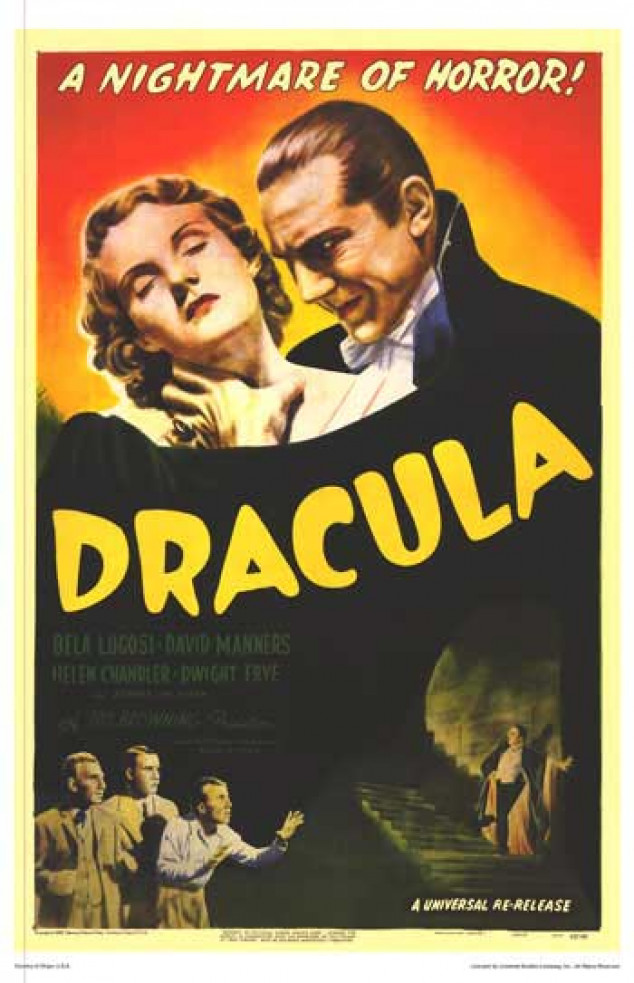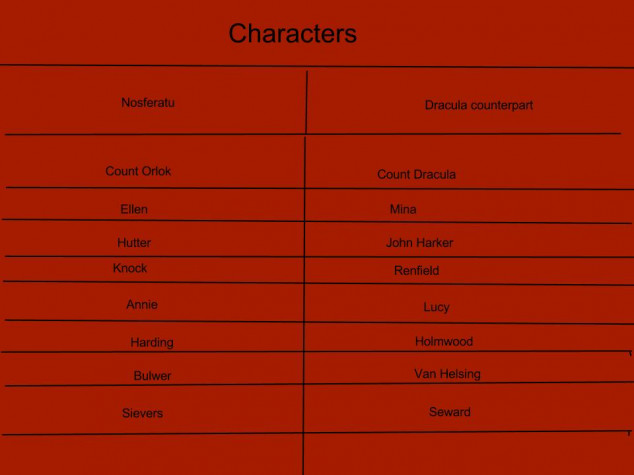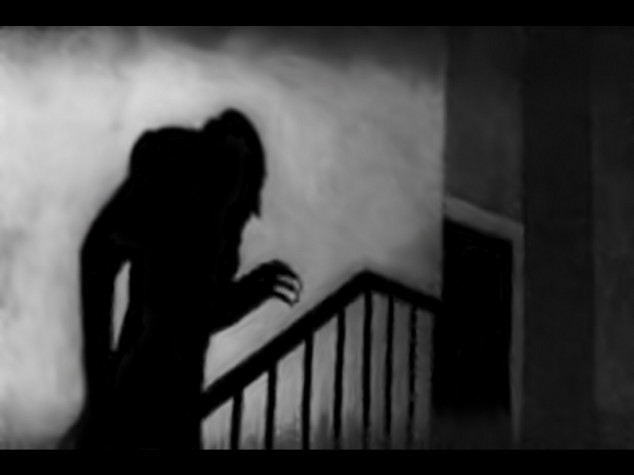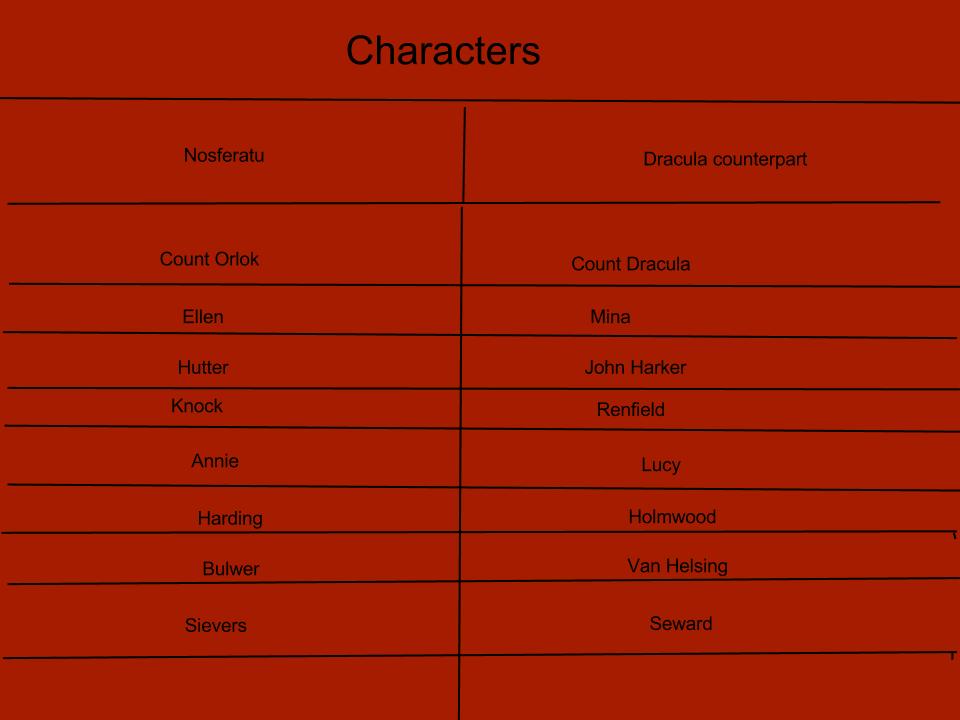Stoker’s Vision On Two Screens: Nosferatu and Dracula
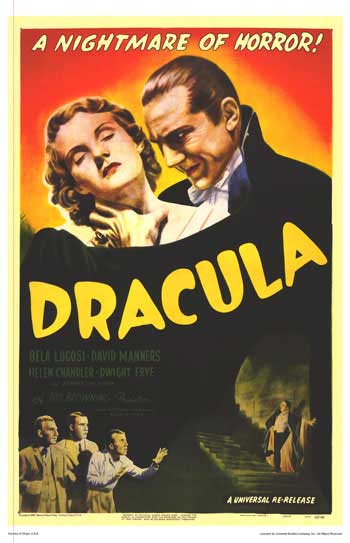 Good Evening, stay for the night as both the 1929 silent Nosferatu is examined side by side with Bela Lugosi’s audible 1931 Dracula. Who can forget the classic horror movies forever emulated by modern-day hopefuls?
Good Evening, stay for the night as both the 1929 silent Nosferatu is examined side by side with Bela Lugosi’s audible 1931 Dracula. Who can forget the classic horror movies forever emulated by modern-day hopefuls?
These two classics films have the same origin: Bram Stoker’s 1897 novel, Dracula. They share a story to the detail, you’ll see. And yet a different atmosphere was gifted to both of these films, showing different sides to the same villain, the same creature. Nosferatu is the terrible creature from the dark mountains. Dracula is the well-dressed and charming child of the night.
Think of the vampire. Do we look for the romantic darkness? The chilling Darkness? Both? Who is this mysterious count in a cape really?
Stoker’s novel started the literary trend, but vampires hit mainstream culture when they hit the silver screen. And even then, within two years of one another, such entirely different adaptations of that very novel appeared to bring us all into darkness as soon as we sunk our teeth in.
First, we examine director F. W. Murnau’s Dracula starring Max Shreck as Count Orlok. I see that doubtful look on your eyes now: Orlok? WHAT? Isn’t It Count Dracula? You’re lying to me! Not quite. Nosferatu was never authorized as an official adaptation of Bram Stoker’s novel, and Stoker’s widow actually threatened to sue Munau for plagiarism. So they replaced the term “vampire” with “Nosferatu” and “Dracula” with “Orlok.”
See the chart below for a list of the characters and their counterparts in both films. While these character roles are the same in both films, they had to be changed. The chart will match the two separate names for characters together, so you’ll understand the similarities.
That being said, a viewer can rely on getting a good film-to-book transition for once. It’s lawsuit accurate.
First seen is a real-estate agent named Hutter , who’s just made a sell to the most wealthy Count Orlok. To seal the deal and celebrate,he goes to visit the count’s mysterious estate (after telling Ellen, Annie, Knock and Harding, of course) despite warnings of superstitious townspeople otherwise. Ah, the birth of a classic trope: The superstitious townspeople give an unheeded warning
So he goes to visit the spooky, off-putting Count Orlok and they have an odd dinner, during which Hutter cuts his thumb. Count Orlok tries to suck the blood from his thumb, and Huttler refuses. This is the first instance of strange behavior from the count, but beware: it’s not the last.
The deal between the two gentleman is soon sealed, though not before Huttler wakes up in the castle with… bites in his neck! And what’s more: Orlok signs to move into the house directly across from that of Hutter and his beloved Ellen. It’s now that Huttler darling suspects something wrong, reading a book on vampires that sow the seed in his mind that this man is perhaps a “bird of death.”
Terrified and determined to find out the truth, he finds the crypt itself in which Orlok takes his deathly rest, coffin and all. Horrified, he flees the site. Seeing Orlok piling up even MORE coffins through a window drives him to a near maddened state of desperation to flee, but is knocked unconscious when he leaps out the window and awakes in a hospital.
Next we are taken to a schooner, which is easily among the more disturbing scenes filmed. Long story short, (and many spoilers and scares to be left to you) no one is left alive when the ship docks. Doctors chalk it up to plague.
Now let’s go back to Huttler’s boss, Knock. He was in a mental ward for a time, but now he has escaped after killing the warden (WHAT? I know, right? Watch the film, it’s super cool).
Now we flash to Ellen, who is a smart lady, and she found out a way to kill this vampire her husband wrote her about. She leaves the window open to lure him in… but faints. (Fill in how and why yourself. A viewer gets it.)
Now they’ve sent for professor Bulwer for help after a dramatic reunion, but as soon as he leaves, with dawn impending, we see the Count enter and… and… Well, I can’t tell you, now can I? That’s the suspense of horror for you!
The film manages to terrify and suck in its readers without a singer spoken word. It does have text screens, which are easier to follow even than subtitles, and the music in the background is a powerful weapon.
But now, we depart from Orlok, move a few years forward: Anew count has appeared for those viewing the silver screen. Meet Count Dracula
Interesting to know is that Bela Lugosi was a second-choice Dracula for director Tod Browning. Originally, he hoped it to promote Lon Chaney (The Wolfman), who died before the film began. All due respect to Lon chaney, it all worked out. Lugosi became an international hit and inspiration for a Bauhuas song.
So, we depart from the original vampire and move onto the vampire romantique!He is the elegant cape-wearing figure of film noir that has immortalized himself in film today. Lugosi played the first of such vampires on the screen that were sinister in deed, not of face.
It’s this snappy count a young man named Renfield travels to Transylvania to do business with despite (gasp!) townspeople warning him that the Count is bad news, his castle cursed! But naturally, he ignores these silly townsfolk and goes on anyway.
Renfield has a pretty nice time with the Count, who’s quite odd (Too many cobwebs for that kind of weath), but altogether very charming and good at keeping his identity hidden.
Renfield is put under a spell by the count, opening a window for a (totally realistic) bat to come through and he faints, after which he’s fed on by Count Dracula.
Skip forward, to a schooner! Renfield is now a raving lunatic, speaking in stereotypical creepy-henchman voice to his master in the coffin whom he protects. The ship arrives with Renfield the only living person aboard, and the warped agent is sent off to the sanitarium.
The count is now London! And he’s met Harker now and now begun flirting with Mina and Lucy, the latter lady of which he charms. This is where the elegance becomes Lugosi’s advantage over Shreck: they’re not initially terrified.
However, it’s not long until Lucy dies from two terrible bits on her neck.
From the sanitarium, Renfield kills and obsesses over insects and starts rambling about vampires, while Doctors Van Helsing and Seward begin to look into this ‘vampire’ ordeal and made a vampire repellant..
Mina wakes up with bite-marks similar to that of her dead friend (and here’s the iconic scene with the bat returning and Dracula leaning over the sleeping lady). Dracula, making a more obvious visit, walks in to see Harker and Dr. Van Helsing talking about vampires downstairs.
This gives an important clue, though, when the two living gentleman notice Dracula hasn’t got a reflection in the mirror, which causes quite the violent response from The Count which gives him away to Van Helsing.
Mina also runs into Dracula at this time in the garden, and he wraps his luxurious black cape around her and attacks her, where she is found by the concerned men later.
Now, in this film, Lucy has become a vampire, a “Mysterious woman in white” who’s been biting children. This one turns out to be Lucy, now a vampire.
The action progresses with Renfield going even madder now in the Sanitarium.
Dracula soon confesses to having made Mina like himself, and he now owns her. Van Helsing is pretty angry, and a battle involving a crucifix and stake ensues, though Dracula manages still to flee!
Mina now tries to kill Harker, who is saved by Seward and she confesses that she is now, like Lucy, a vampire.
Now this ending is more of a surprise, though Mina and Harker have essentially the same result as Ellen and Hutter, so only that shall be disclosed here.
The similarities show that these two stories have the same origin, though Dark Romanticism versus Noir Terror transform them into different films entirely. The addition of dialogue and slightly better film quality, too, give Dracula a bit of an edge so far as details and what can happen, but the prettiness of it all can take away the sense of fear. In fact, without Renfield, it would probably lose it’s Horror Movie status entirely.
Sinking my teeth into both, I am equally satisfied by either film, though Nosferatu is a tale of fear and a monster; Dracula is about a suave and smooth-speaking killer, both with an immortal edge.



